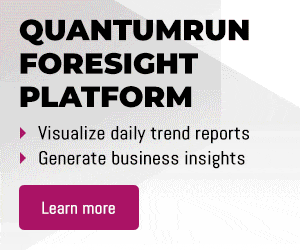IoT in telecom: When your toaster texts back
IoT in telecom: When your toaster texts back
IoT in telecom: When your toaster texts back
- Author:
- March 31, 2025
Insight summary
Telecom-powered Internet of Things (IoT) technology is connecting everyday devices and changing how people, businesses, and governments operate. Advances like specialized 5G networks and artificial intelligence (AI) allow new types of services, from healthcare monitoring to flexible consumer pricing models. However, as IoT expands, it also brings serious challenges related to privacy, cybersecurity, and unequal access.
IoT in telecom context
The IoT in telecommunications connects smart devices that autonomously exchange data through telecom networks. These devices—ranging from smart home appliances and industrial sensors to connected vehicles—communicate through networks created and managed by telecom providers. For instance, telecom companies facilitate real-time data sharing in connected cars, enabling autonomous driving and predictive vehicle maintenance. Similarly, healthcare providers use telecom-enabled IoT systems to remotely monitor patients, ensuring critical health data is continuously transmitted and analyzed.
Central to IoT’s growth in telecommunications are developments in cellular technologies like standalone 5G networks and edge computing. Standalone 5G allows telecom companies to create specialized network slices tailored to specific applications, such as industrial automation or smart city infrastructure. For example, Finland-based telecom giant Nokia, in collaboration with UAE's telecom provider e& UAE, demonstrated multi-access network slicing capable of supporting various applications simultaneously. Edge computing further supports IoT by processing data closer to devices, significantly reducing latency, which is critical in real-time applications like industrial robots or remote surgeries.
Moreover, telecom companies are increasingly incorporating AI to manage the complexity of IoT networks and enhance customer experiences. Sweden-based Ericsson introduced its Telecom AI initiative to facilitate automated, intelligent network operations that adapt dynamically to changing user demands. However, security challenges persist, as billions of connected devices create multiple entry points for potential cyberattacks, requiring robust measures like real-time threat monitoring and secure device authentication.
Disruptive impact
Smart home solutions using telecom-backed IoT might adjust household energy consumption based on real-time utility rates, directly saving people money on bills. Additionally, wearable devices connected to telecom networks could monitor personal health and promptly alert users or doctors of potential medical concerns, promoting proactive healthcare. However, as more personal data is generated and shared through these devices, people may face greater risks of privacy breaches or identity theft. Individuals may also increasingly depend on IoT-enabled systems for daily tasks, which could reduce personal autonomy and create vulnerability if these systems fail.
Businesses across industries stand to gain new revenue streams by incorporating telecom-supported IoT services. For example, insurance companies could offer usage-based auto insurance, adjusting rates based on real-time driving behavior transmitted from connected vehicles. Retailers might deploy IoT-equipped shelves or carts to gather data on shopping habits, enabling precise targeting of promotions or dynamic pricing strategies. However, the dependency on continuous data connectivity creates operational risks, as interruptions to telecom networks could disrupt critical processes and customer interactions.
Municipalities might leverage IoT data transmitted through telecom networks to improve urban planning, such as optimizing public transportation routes based on real-time usage patterns. Governments could also collaborate to develop standards for IoT telecom security to minimize threats from cyberattacks on critical infrastructure. However, governments may face ethical dilemmas regarding mass data collection practices, prompting debates over surveillance, consent, and individual rights. Additionally, policymakers could allocate substantial funding toward telecom infrastructure upgrades, diverting resources from other pressing social needs like education or healthcare.
Implications of IoT in telecom
Wider implications of IoT in telecom may include:
- Cities expanding telecom-based IoT solutions to monitor pollution levels, resulting in cleaner air and improved public health.
- Telecom companies developing flexible pricing models based on IoT data usage, allowing consumers more affordable and customized services.
- Governments creating dedicated cybersecurity agencies specifically to monitor telecom IoT networks, increasing public sector employment opportunities.
- Increased adoption of telecom-connected remote medical services in rural areas, reducing healthcare access gaps among older or isolated populations.
- Rising demand for skilled telecom-IoT technicians, reshaping vocational education programs toward telecommunications careers.
- Political debate intensifying over telecom providers’ responsibilities regarding IoT-based surveillance and citizens' rights to digital privacy.
- Growth of shared IoT telecom infrastructure between countries, potentially reducing international tensions over resource allocation.
- Increased generation of electronic waste from outdated telecom IoT equipment, prompting stricter recycling laws.
- Businesses shifting toward service-based subscription models using telecom IoT connections, replacing traditional product sales methods.
- Dependence on continuous telecom connectivity causing socioeconomic disparities between regions with strong and weak telecom infrastructure.
Questions to consider
- How could telecom-powered IoT devices change your daily habits or personal spending in the next five years?
- How might the growing role of IoT in telecom affect job opportunities in your industry or local community?
Insight references
The following popular and institutional links were referenced for this insight:



